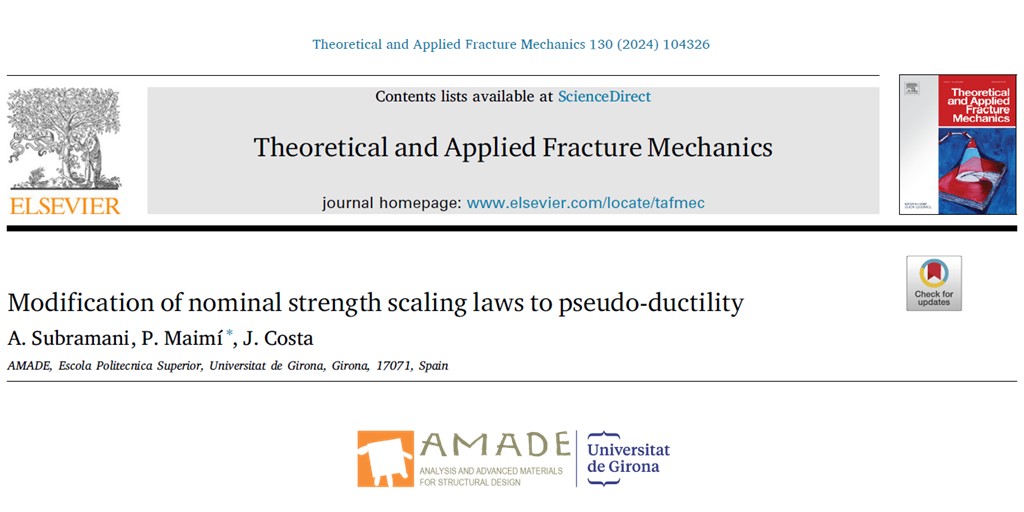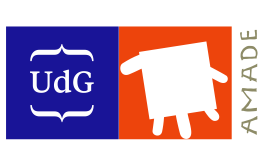
08 May New paper on modification of nominal strength scaling laws to pseudo-ductility
Researchers of AMADE – Universitat de Girona (A. Subramani, P. Maimí, J. Costa) have recently published the paper entitled “Modification of nominal strength scaling laws to pseudo-ductility” in the journal Theoretical and Applied Fracture Mechanics (130, 2024, 104326).
This is an open access article under the CC BY license, available at:
https://www.sciencedirect.com/science/article/pii/S0167844224000752
This research is part of the PhD thesis of Anbazhagan Subramani, defended in April 2024, under the supervision of Pere Maimi and Josep Costa.
In this paper, the authors investigate the influence pseudo-ductility has on the notched strength and size-effect behaviour of typical notched specimens of quasi-isotropic pseudo-ductile composite materials. Their previous findings reveal that pseudo-ductility enhances translaminar toughness and nominal strength recovery but can negatively affect specimens below a critical notch size. The traditional Bažant Size Effect Law (SEL) does not adequately capture these observations, necessitating modifications to account for the non-recoverable pseudo-ductile damage past the pseudo-yield strength. The authors propose modifications to the nominal strength scaling laws, aiming to characterise both the notched strengths for a given notch radius and the size effect due to pseudo-ductility. Modifications are applied to centre-cracked (CC), elliptical hole (EH), and open-hole (OH) specimens for a wide range of pseudo-ductile materials.
The proposed modifications for nominal strength predictions agree with FE estimates across all three notch shapes (CC, EH, and OH). The findings suggest that the presented SEL serves as a valuable tool for understanding and assessing the size-effect behaviour of pseudo-ductile composites.
The authors acknowledge the funding and support of Ministerio de Ciencia, Innovación y Universidades for the project En pos de materiales compuestos de fibra larga híbridos, bio-basados y sostenibles para aplicaciones estructurales (SUBHYCO) (PID2021-126989OB-I00). Anbazhagan Subramani acknowledges the financial support of the Universitat de Girona for INV309_2019 and would also like to thank Universitat de Girona and Santander Universidades for the financial resources provided through Personal Investigador en formació (IF_UDG), 2020. Open Access funding provided thanks to the CRUE-CSIC agreement with Elsevier.



